Proposal is a very familiar term in Marketing and Communications. However, not everyone understands what Proposal is ? So in this article, MarkKnow will help readers answer questions, and at the same time provide information related to how to build a standard, professional Proposal. Read and refer to it now!
What is a Proposal?
What is a Proposal ? A Proposal is a document used to propose an idea, solution, or project with the aim of persuading the recipient to accept, fund, or cooperate. It is an important tool in many fields such as business, research, and project development. A Proposal helps you communicate your ideas in a clear, organized manner to gain the necessary consensus and support.
Proposal is a formal presentation, ensuring aesthetic elements but still clarifying the ideas sent to customers and partners. It is presented in Word, Excel or Powerpoint format.

What is the Role of a Proposal?
Through the concept of “ What is a Proposal ” shared above, you can somewhat understand its role. But in fact, this idea will have a greater meaning than that. Specifically as follows:
Communicating Ideas
Proposal plays a key role in communicating ideas in a clear and systematic manner. It helps the writer present his ideas about a specific project or plan so that the reader can understand the content, goals, and implementation methods. The detailed presentation helps eliminate ambiguity, ensuring that all parties have a clear understanding of the direction and expectations of the project.
Persuading Readers
A Proposal not only conveys an idea but also has the task of persuading the reader to support or agree with the proposed plan. By presenting it logically, a proposal can highlight the necessity and benefits of the project. This ability to persuade plays an important role in getting approval, funding, or support from stakeholders.
Define Goals and Plan
A Proposal helps to clearly define the goals that the project needs to achieve and outlines a specific plan for implementation. It includes detailed steps, timelines, resources needed and participants. This gives the reader an overview of the project roadmap, ensuring everyone is on the same page.
Feasibility Analysis
Proposal is also a tool to analyze the feasibility of the project, including aspects such as finance, technology, human resources, and risks. These analyses help assess whether the project can be successful or not and what challenges may be encountered. Through this, decision makers can determine the reasonableness and potential of the project before committing resources.
Basis for Decision-Making
Based on the content of the Proposal, readers can make strategic decisions. A good Proposal will provide sufficient information and analysis to help stakeholders review and make the right decisions. Specifically, the Proposal may relate to funding, resource allocation, or approval of the next steps of the project.
What Does a Proposal Include?
The content of the Proposal will include the following main sections:
What – What Content is Presented?
The content in this section focuses on describing in detail the project or solution you are proposing. It includes stating specific goals, implementation steps, and expected results. You need to clearly present what you intend to do, what solution you offer, and how that solution will solve the problem or meet the needs of the customer. The “What” section should be detailed and easy to understand so that the reader can grasp your entire idea and plan.
Why – Why is the Purpose and Feasibility?
The “Why” section should explain why you are proposing the solution or project and its purpose. You need to clarify the problem or opportunity your project is addressing and why your solution is the best option. At the same time, you should present the feasibility of the project by outlining the factors that help prove that the project will be successful, including analysis of benefits, the need for the solution, supporting factors such as resources, experience, preparation.
Who – Who is the Implementer?
The “Who” section will provide information about the individuals or organizations implementing the project or solution. You need to clearly state who is the project leader, the team members, and the specific roles of each person. At the same time, you should present the experience, expertise, and capacity of the implementers to demonstrate that they are capable of successfully implementing the project. This is an important part to build trust with the reader about your implementation ability.
When – When is the Time?
The “When” section will help you determine the expected time for implementing the project or solution. You need to provide a specific schedule, including important milestones and stages of the project. With such clear milestones and deadlines, readers can clearly understand the expected time for each implementation step and the final result. This is the basis for them to evaluate the ability and effectiveness of the implementation plan.
Where – Where to do it?
The “Where” section describes the location or area where the project or solution will be implemented. In this section, you need to provide information about the specific location, including why that location is suitable. Here, you can also add content, images of necessary facilities, influential geographical factors, and environmental conditions. This information helps readers better understand the context and factors related to the project location.
How – How to do it?
This section details how you will implement the project or solution, including the methods, processes, tools, and techniques you will use. Describe the specific steps in your implementation plan, how you will manage risks and issues that may arise, and the quality control measures you will take. This will show your readers that you have done your homework and have a clear plan for implementing the project effectively.
Structure of a Proposal
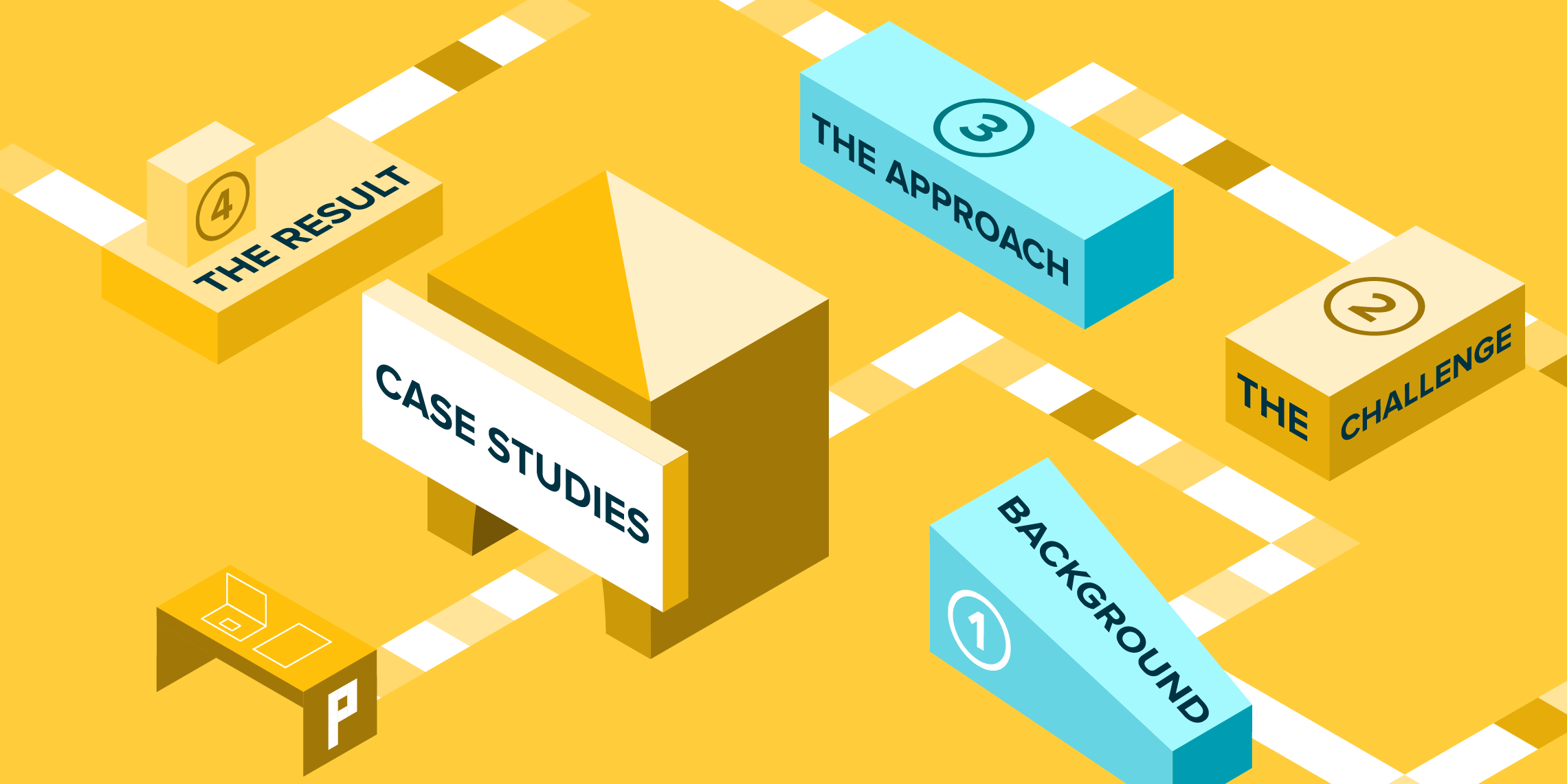
To be able to build a complete Proposal, you will need to clearly understand its structure. Specifically, it includes:
Introduction
The introduction of your proposal is important in making a first impression on your readers. This is where you present the purpose and rationale for your proposal, as well as introduce the organization or individual who is implementing it. You need to provide an overview of the project or solution, and clearly state the problem or opportunity your proposal is addressing. This section should also demonstrate a deep understanding of the needs and wants of your target audience, creating a connection and pique the reader’s interest from the very first words.
The contents you need to clarify are:
- What is the name of the project or program?
- What is the organization like?
- Introduce yourself, who are you and why are you sending this Proposal?
- Who are the attendees?
- State clearly what you want the reader to do next?
- Main content framework of the program, project.
- Contact information.
Customer/Partner Centricity
When writing a Proposal, it is extremely important to put the customer or client at the center. This section should focus on solving their specific problems and clearly outline the benefits they will receive from your proposal. You must clearly demonstrate that the solution you offer not only meets their needs but is superior to other solutions. This will create a clear picture of how your proposal can create real value and meet the expectations of your target audience.
Here, you will need to demonstrate that you/your company understands what your customers/partners want.
- State why you are doing the project/event.
- Benefits for all parties involved.
- Time, place of organization and implementation.
- Detailed timeline of the event, project and location.
Detailed Description of Proposals
After briefly introducing the project, describing the needs and what the customer/partner is interested in, next you will need to describe in detail your products and services. Specifically, you will need to accurately describe the proposals for the project/program. This is considered the most important part of a Proposal. Therefore, you need to come up with a suitable idea and develop it into a proposal.
For simple proposals, you only need to present briefly on 1 page, mentioning the solutions. However, for complex proposals with higher requirements, you can provide other related content, specific project plans, and present multiple slides.
Expertise and Experience
The expertise and experience section of the Proposal is to build trust and verify your ability to implement the project. Here, you should present your or your organization’s achievements and relevant experience, including successful projects and results achieved. Clearly state the skills, certifications, and expertise of the implementation team or responsible individual, to demonstrate that you have the capacity and experience to effectively implement the proposal. This section helps readers feel secure and confident in your ability to implement.
Specific content will include the information you want to convince your customers/partners.
- Introduction to the company, organizing committee,…
- Introduce members, participating staff and outstanding achievements.
- Describe your experience or list of clients you have worked with, done similar work, list of successful projects and events.
- Achievements, awards, certificates,… from satisfied customers of your company, organization.
Popular Types of Proposals Today
There are many different types of proposals available today. They all share the common goal of presenting ideas clearly and convincingly to readers, but each has a different approach and information requirements. It is important that each proposal is tailored to the audience and the specific purpose of the project, thereby increasing the likelihood of success in gaining support or approval.
Research Proposal
Research Proposals are commonly used in academic, scientific, and technical fields. Their main purpose is to provide a detailed plan for conducting research. The main elements of a research proposal include:
- Research problem or question to be addressed
- Theoretical basis
- Research hypothesis
- Methodological approach
- Expected data analysis
In addition, it also describes the implementation time, the participating team, and the necessary resources. An effective research proposal will highlight the novelty and scientific significance of the research, and at the same time point out feasible and clear approaches. The subjects of the research proposal are often funding organizations, academic councils, or government agencies, who need to evaluate the appropriateness and value of the research before funding or approval.
Business Proposal
An important tool in introducing new business ideas, plans or projects is the Business Proposal. This type of Proposal typically includes market analysis, competitive analysis, marketing strategy, operational plan and financial projections.
In addition, the business proposal can also mention the necessary resources such as human resources, finance, and related partners. The goal of the business proposal is to convince investors or partners to believe in the project’s profit potential. To do this, the writer needs to clearly demonstrate how the idea will solve market needs and bring profits, and must provide convincing data on the feasibility of the project.
Book Release Proposal
A book proposal is a document that an author or the author’s agent sends to a publisher with the goal of convincing them to publish the book. It usually includes a general description of the book, its intended audience, and why the book will attract market attention.
This proposal is usually accompanied by a synopsis, sample chapters, and information about the author (such as achievements or writing experience). Publishers use this proposal to assess the commercial potential of the book and consider investing in the publishing process. The persuasiveness of the proposal will be based on the ability to demonstrate that the book has unique content, is attractive to readers, and is in line with current market trends.
Proposal for Funding
A funding proposal is used to request financial resources from funding organizations, governments or businesses to support non-profit, social, or research projects. This proposal usually includes the project’s objectives, implementation plan, and how the funding will be used. In particular, it needs to clarify the social importance, long-term impact of the project, and how the project will address community issues.
Another important part is a detailed budget, which lists specific cost items so that the funder knows where the money will be spent. The feasibility of the project and the convincingness of the expected results will be the determining factors in the ability to receive funding. This type of proposal requires careful planning and detailed presentation, as transparency and clarity are key to gaining support from stakeholders.
Basic Template of a Proposal
Below is a basic Proposal template with 4 sections: Overview, Goals, Specifications, and Milestones:
- Overview:
- Brief description of the project or proposal, including background and why the project needs to be undertaken.
- Introduce the problem or opportunity the Proposal aims to solve, as well as the overall purpose of the project.
- The project’s main beneficiaries or impacts.
- Goals:
- Identify specific project goals.
- Each goal should be clear, measurable, and relevant to real needs.
- Describe how achieving this goal will benefit the business or organization.
- Specifications:
- Details of technical, financial, human and technological requirements needed to implement the project.
- Includes details on how to implement, tools and methods to use.
- List any special conditions or restrictions that the project must comply with.
- Milestones:
- Identify key milestones throughout the project.
- Provide an estimated completion time for each phase or major task.
- Make sure these milestones are clear and progress can be measured.
How to Write a Standard Proposal
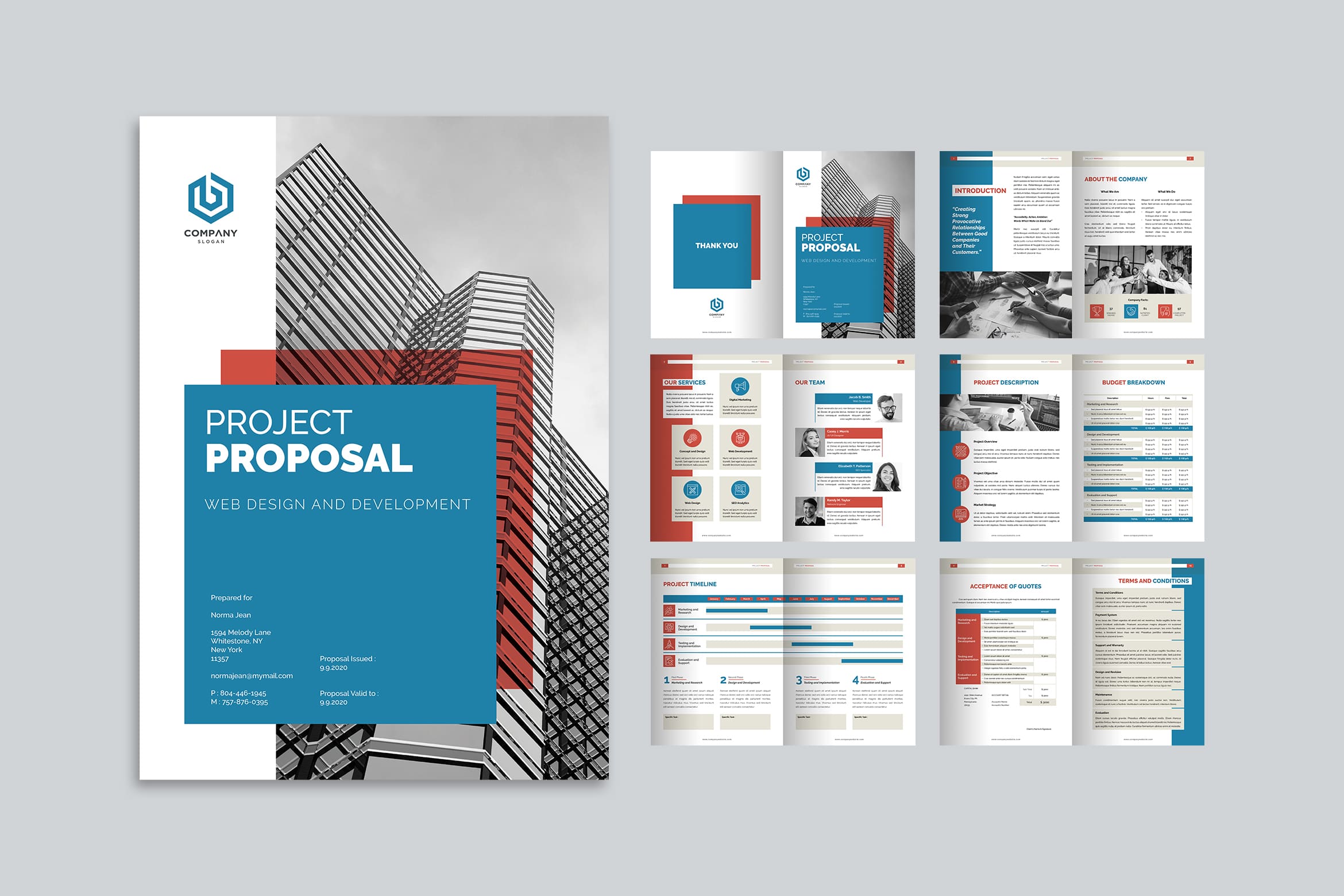
How to write a standard Proposal? MarkKnow will guide you in detail through each step below:
Step 1. Identify and Define Target Audience
Because the key to a successful Proposal is persuasion and effectiveness. To do that, you need to attract, arouse curiosity and interest from customers and partners. Think about the readers and list questions such as “who will read the Proposal?”, “will they accept or reject the proposal in the Proposal?”, “what issues are they interested in?”, … All of these questions will help you focus on ideas and present the Proposal in the most effective way.
For example, if you are sending a Proposal to an investor, they will be interested in the profitability and risk. Meanwhile, a business partner may be interested in the cooperation and long-term growth potential. Understanding your audience helps you write an attractive and convincing Proposal.
Step 2. Identify the Problem Your Proposal Will Solve
Every Proposal needs to start by identifying and presenting the problem it will solve. This problem can be a market challenge, a need of the target audience or a potential opportunity. To increase persuasiveness, you should provide data, statistics or research to prove that the problem really exists and is worth solving. You will need to consider who this proposal affects? What is the reason for writing the Proposal and explain the current situation. You should use specific evidence and figures to increase credibility with customers/partners.
For example, if you are writing a business proposal, the problem might be “the lack of a particular product or service in the market”. If it is a research proposal, the problem might be “the lack of information or in-depth research in a particular scientific field”.
Step 3. Identify Solutions
This is the core part of the Proposal. After clearly defining the problem, you need to present a specific, clear, detailed solution. This solution must directly solve the stated problem and needs to be analyzed from many angles to prove its feasibility. You need to describe the implementation steps, tools and resources needed, as well as how this solution will benefit the target audience. In particular, you need to emphasize the reasonableness, feasibility of the solution, the benefits, the goals achieved with a specific budget.
For example, if your Proposal is about a technology project, the solution might be “develop an application or software to solve a problem users face.” You need to describe in detail the features of the application, the development time, resources (human, financial), and the clear benefits it brings to the customer or business.
Step 4. Proposal Conclusion: Costs, Benefits and Summary
You need to reiterate the overall purpose, costs and benefits of the proposal. Don’t forget to thank the reader for taking the time to read your proposal. Finally, you need to leave contact information so that customers and partners can contact or send feedback on your proposal.
See more: What is target customer ? How to identify target customer?
Secrets to Writing a Professional, Impressive Proposal
Paying attention to every detail in your Proposal will help you make a strong impression, increase your chances of success and convince your target audience.
Appearance Care
The form of the Proposal is the first impression that the reader receives, so the presentation needs to be clear and highly aesthetic. You need to ensure that the titles, tables of contents, and paragraphs are used appropriately so that readers can easily find the information they need. The layout should be neat, scientific, and not too many words on a page. Using professional fonts, appropriate font sizes, and visual elements such as charts, tables, and illustrations is also an effective way to clarify complex ideas and increase persuasiveness.
Concise, Easy to Understand
In Proposal, it is essential to be concise and easy to understand. This does not mean that you leave out important information, but you need to know how to convey the message concisely. Every idea should be presented clearly, avoiding long or overly complicated sentences. The main message should be easy to grasp within the first few seconds, ensuring that the reader can immediately understand your idea after just one reading.
Customer Focus
A successful Proposal puts the reader at the center. The target audience will only care about how your proposal helps solve their problems. Therefore, the Proposal should focus on the benefits they will receive. You can ask questions like: “What do customers need? And how can my product/project help them?” to clarify the value you bring, while providing a solution that the target audience is truly interested in and willing to invest in.
Build the Most Optimal Plan Possible
Every plan in the Proposal needs to be detailed and highly feasible. The implementation steps should be clearly described, in a logical order. You must consider factors such as resources, time and risks to come up with a feasible plan. An optimal plan not only helps you complete the project but also ensures cost and time efficiency, while meeting the requirements of the target audience. In addition, you also need to have a backup plan in case of problems.
Research Your Competitors
Competitor research helps you highlight your competitive advantage in your Proposal. Find out what your competitors are doing, what their limitations are, and what you can improve or do better. When you understand your competitors, you will be able to propose a unique, superior solution that can create differentiated value for your customers. This increases the persuasiveness of your Proposal because you have taken into account the current competitive landscape.
Deadline
A clear deadline shows that you are organized and professional in implementing the project. You should divide the project into stages and set a deadline for each part, so that the reader can easily visualize the progress. This way, the reader will know when they can see the results and, if necessary, they can adjust their expectations based on the given time frame. Deadlines also help you build trust with partners or investors that you will complete the project on time.
Budget
The budget section is important because it helps the reader understand the costs involved in implementing the solution. You need to detail each cost item, such as personnel, equipment, materials, and any other incidental costs. The budget should be transparent and reasonable, avoiding over- or under-estimation. In addition, you need to clarify the financial benefits that the target audience will receive, ensuring that the investment costs are worth the results the project brings.
Common Mistakes When Writing Proposals You Need to Be Aware of
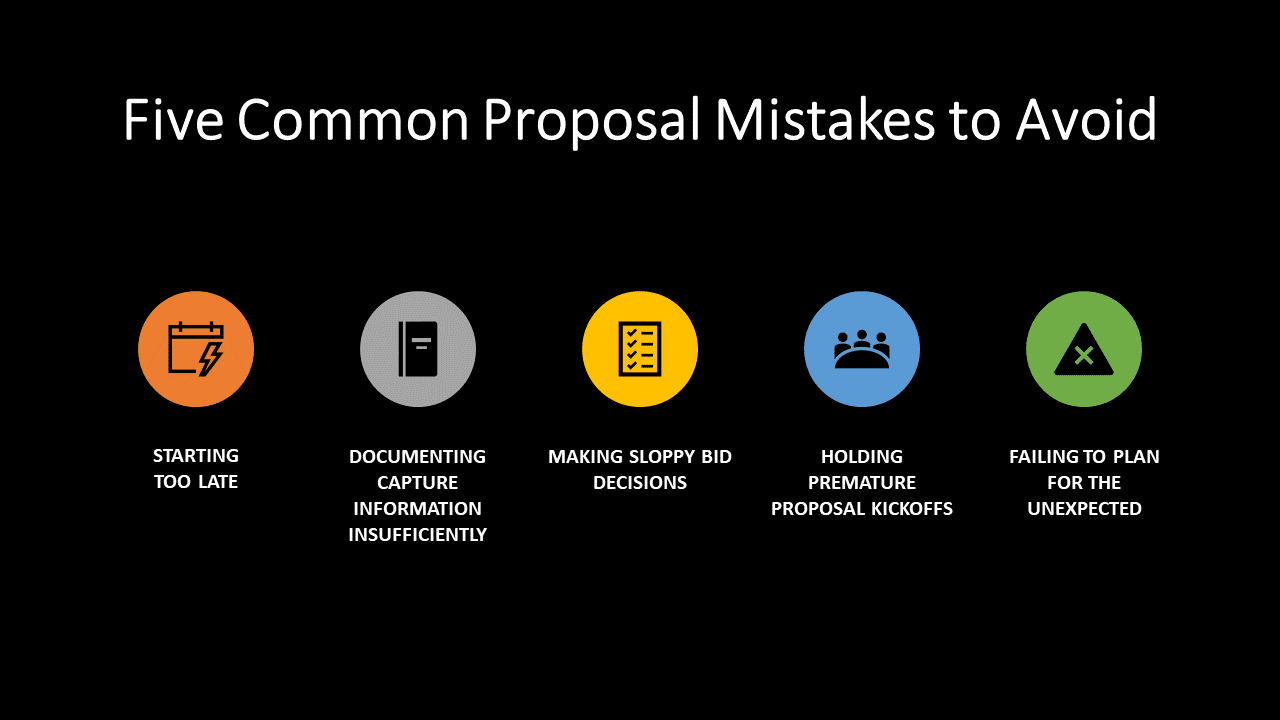
What are the common mistakes when writing a Proposal? Knowing about them will help you know how to avoid them when implementing. Specifically as follows:
Distracting Customers
When writing a Proposal, the first thing you need to avoid is losing interest from your customers. If your proposal is ignored by your potential customers, no matter how good/quality your product is, it will not interest them. This will cause all your business relationships to crumble before they even start.
No one has time to sift through irrelevant information for you. So marketing proposals with redundant, unnecessary content will drive customers away from your business. It’s the same as potential customers seeing a disjointed, unattractive Proposal that makes them ignore your brand.
Too Focused on Experience and Partners
To impress your customers, your Proposal should focus on your skills, awards, and achievements. However, they are often placed at the end of the Proposal, not at the beginning. Why is that?
Because customers often tend to suspect that the information received is not authentic. Therefore, you should not focus too much on writing about the expertise and information of the business, but you should answer questions related to customer psychology in the Proposal such as:
- What do I get from the Proposal?
- Propose and present issues scientifically and logically to guide customers.
Marketing Proposal Structure and Problem Presentation Mistakes
When the information you provide in the Proposal is not reasonable, this means that the proposals are not attractive and not convincing to customers. In addition to presenting clear content, you also need elements to help customers pay attention to your business brand. To do that, you need to answer the following questions:
- What should I say about my proposal?
- What unnecessary things should I leave out of the proposal?
- How do you tie everything in your Proposal together to make sense to your customers?
Where to Find Professional Proposal Templates?
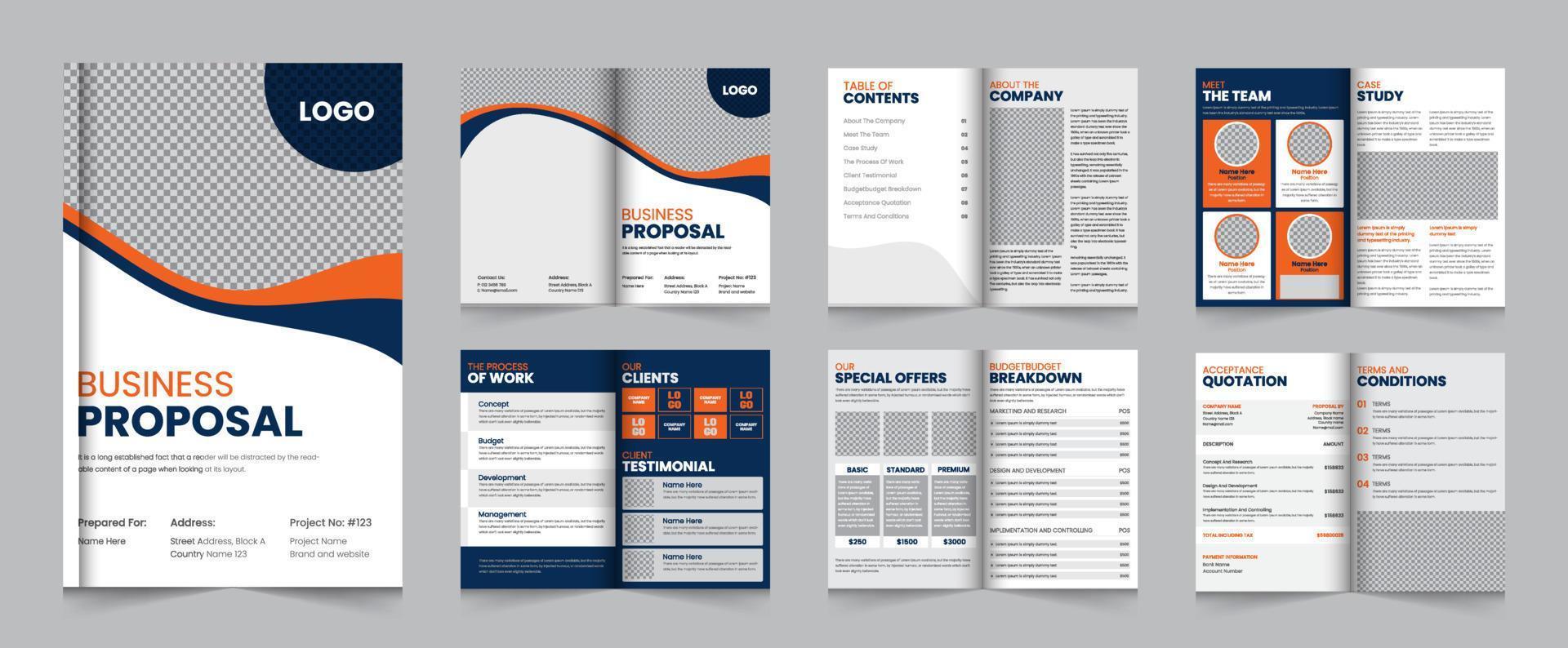
Are you new to writing Proposals and want to learn from professional Proposal templates? MarkKnow will send you some standard templates as follows:
Better Proposal
Better Proposals is a unit specializing in providing high-quality Proposals, impressive and unique forms. Not only that, the investment fee is extremely reasonable, from only $ 13 / month, customers can own 10 great Proposals sets. In addition, the developer of Better Proposals is quite generous when integrating many more Templates, measurement features, and available digital signatures, bringing many benefits to customers.
Proposify
Proposify is also a website that specializes in providing Proposal templates for customers. However, compared to Better Proposals, the cost of owning Proposal is somewhat higher, because $19/month you can use many different Proposal templates. But this fee allows you to use 3 different accounts. In addition, Proposify has additional features such as: Notifications, measurements, digital signatures.
Qwilr
Qwilr is a unit specializing in providing documents related to Marketing. The unit creates conditions to help you access a rich ecosystem besides Proposal templates. However, compared to Better or Proposify, the cost is much higher, you will have to invest $ 29 / month for 3 accounts.
Canva
Canva is a popular online graphic design tool that allows you to create professional documents, including proposals, easily and efficiently. Here is a detailed guide to designing a proposal on Canva:
Step 1: Create a Canva Account
First, go to Canva and sign up for an account if you don’t have one. You can use your Email account or sign in via social networks like Facebook or Google.
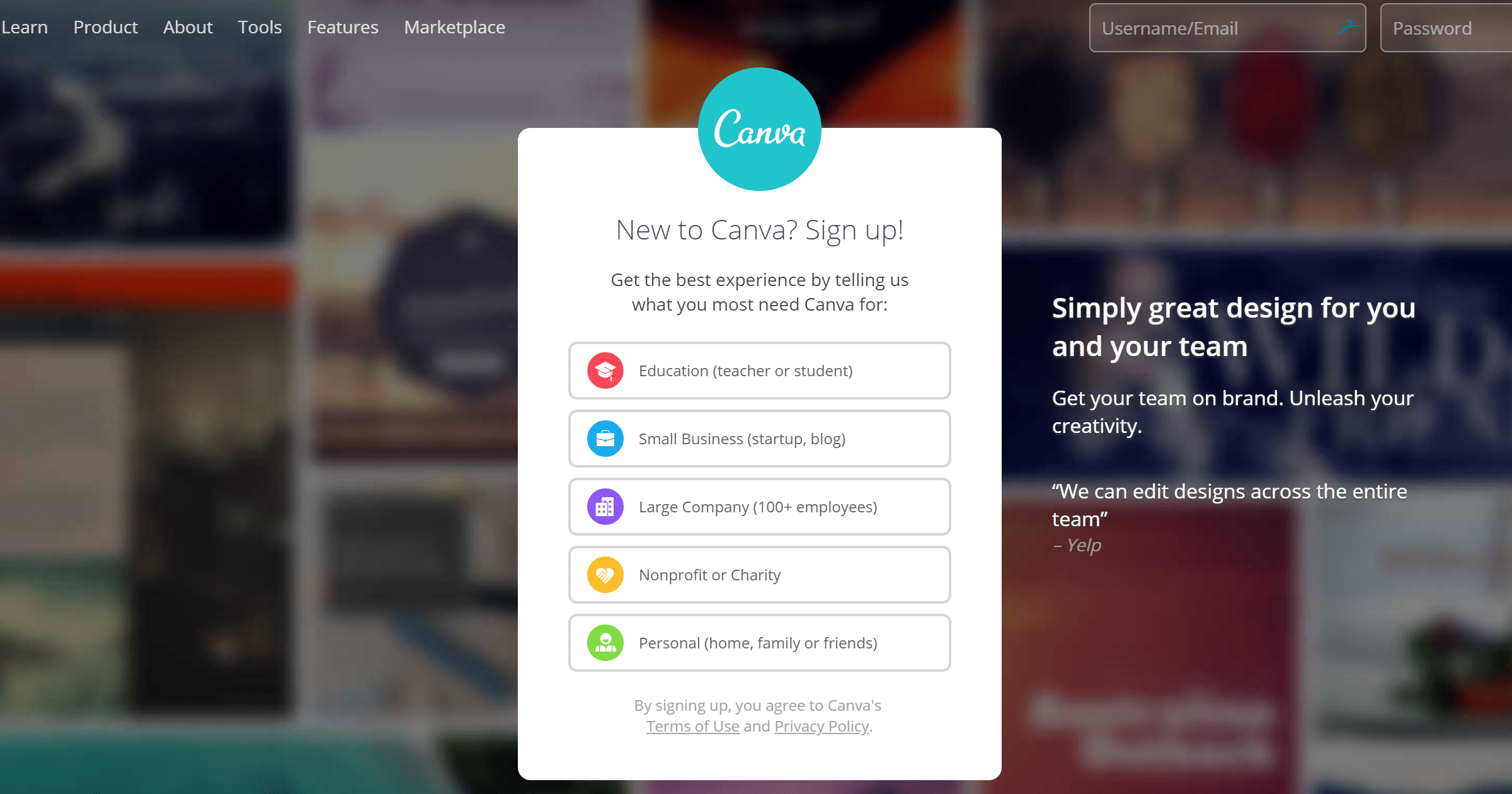
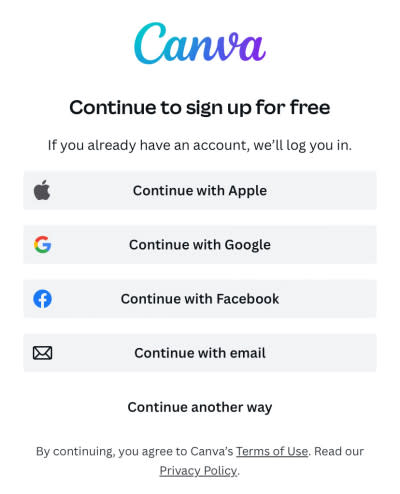
Step 2: Select Proposal Template
-
- Search for a Template: In Canva’s main interface, use the search bar and type in the keyword “Proposal” to find available Proposal templates.
- Choose a Template: Browse through the available templates and choose one that suits your needs. Canva offers a variety of templates with different designs and structures, helping you get started quickly.
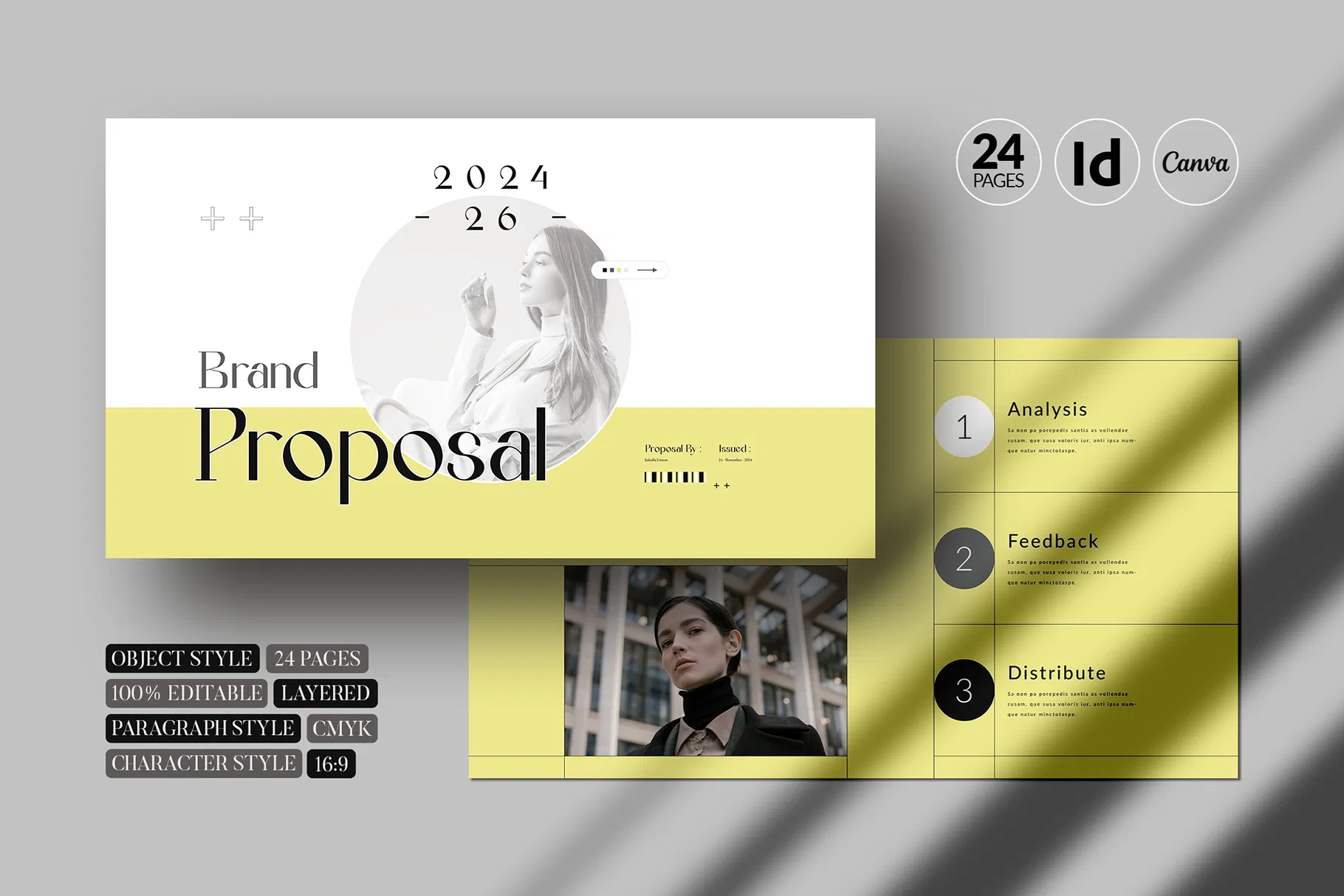
Step 3: Customize the Proposal Template
-
- Edit Text: Click on the text boxes in the template to change the content as per your requirement. You can edit the title, content sections, add specific information about your project or solution.
- Change Images: If the template has images, you can replace them with your own or choose from Canva’s image library, drag and drop the image into the desired location.
- Change Colors and Fonts: Customize colors and fonts to match your brand or style. Use Canva’s formatting tools to change colors, text sizes, and font styles.
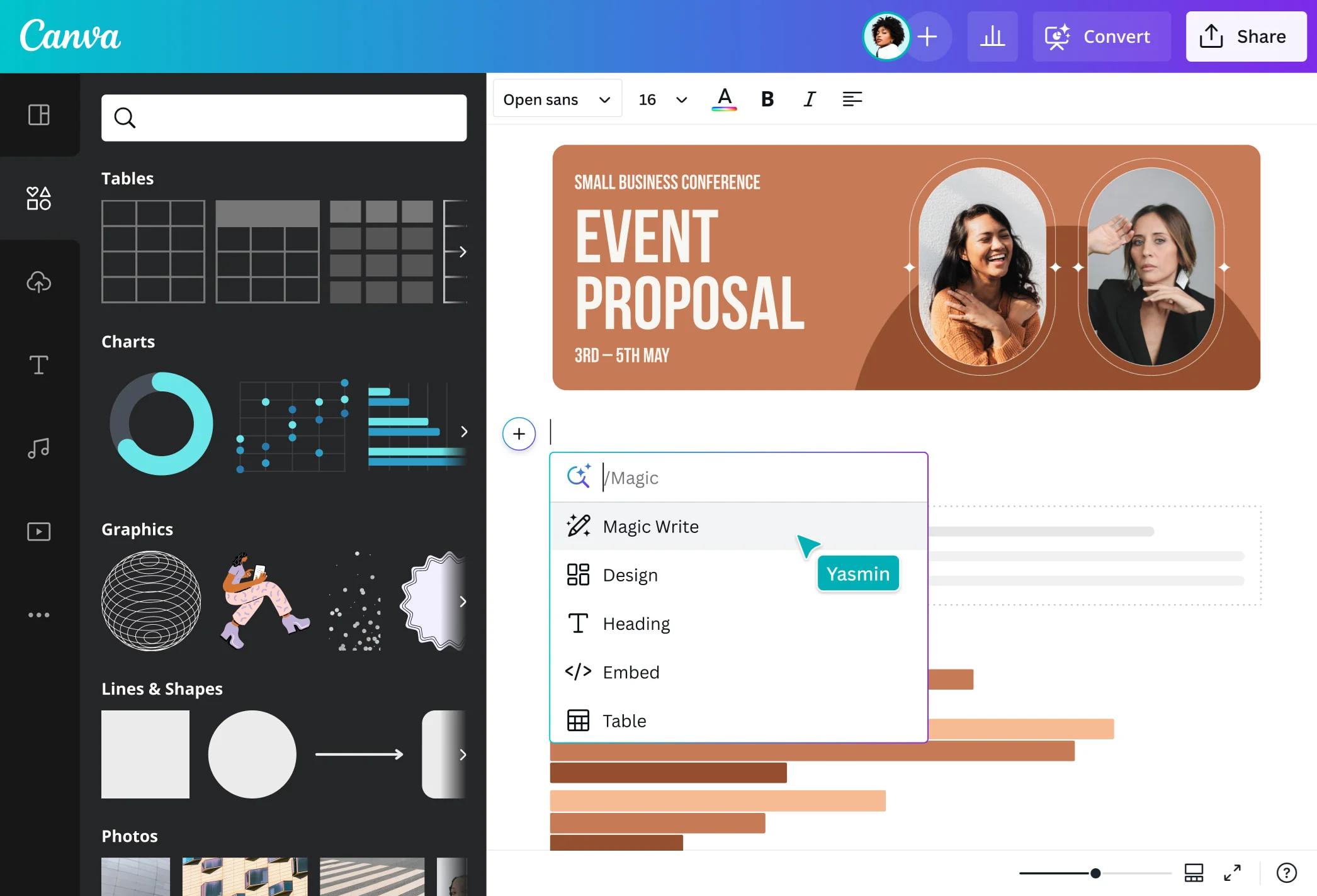
Step 4: Add other ingredients
-
- Add Design Elements: Use Canva tools to add design elements like charts, tables, icons. This can help highlight information and make your Proposal more dynamic.
- Insert New Pages: If you need to add more pages to your Proposal, click the “Add a new page” button to add new pages and continue editing.
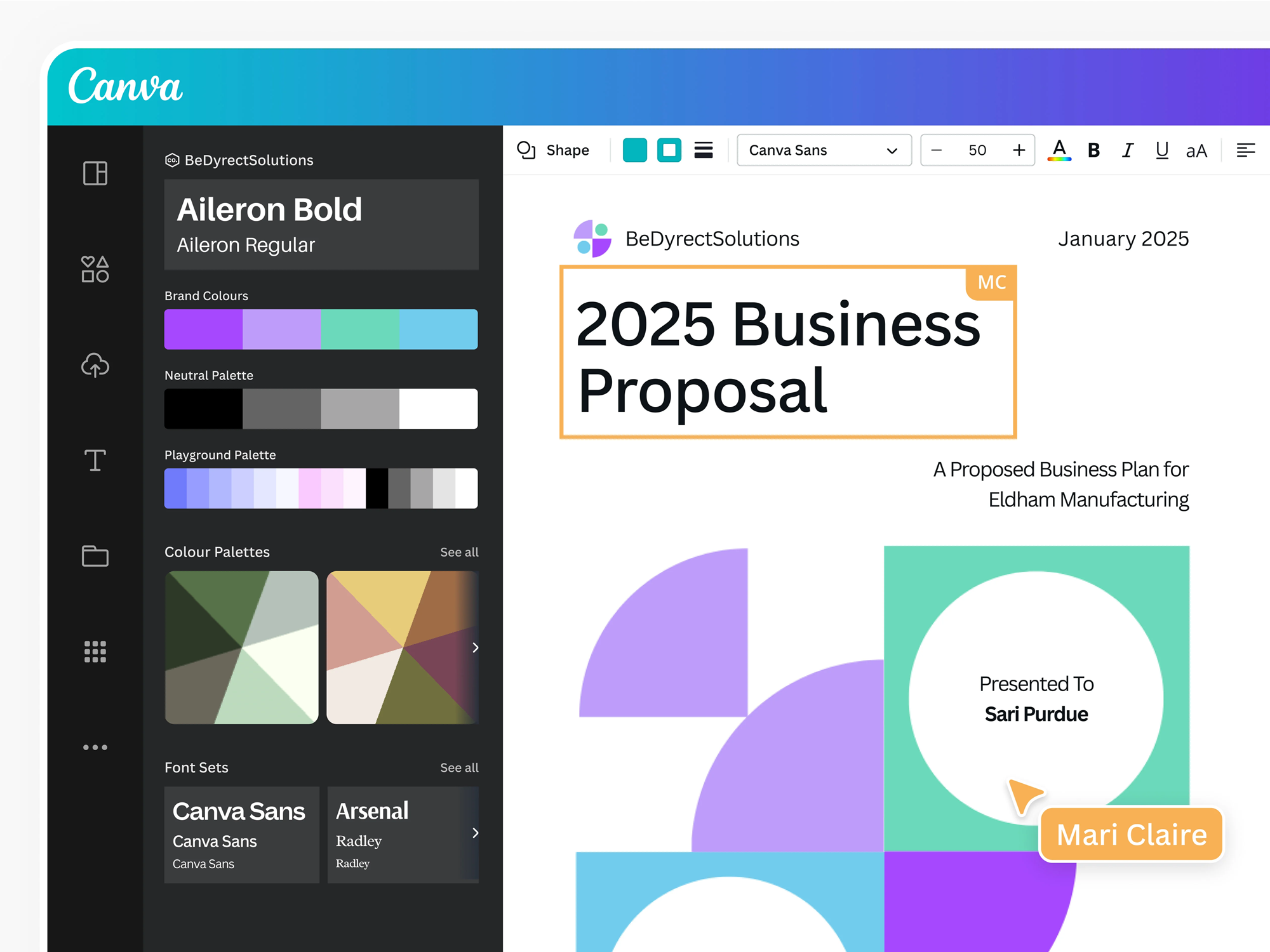
Step 5: Review and Finalize
-
- Preview: Use the preview feature to check the entire Proposal before finalizing it. Make sure all information is accurate and presented clearly.
- Final Edit: Make any final changes if necessary.
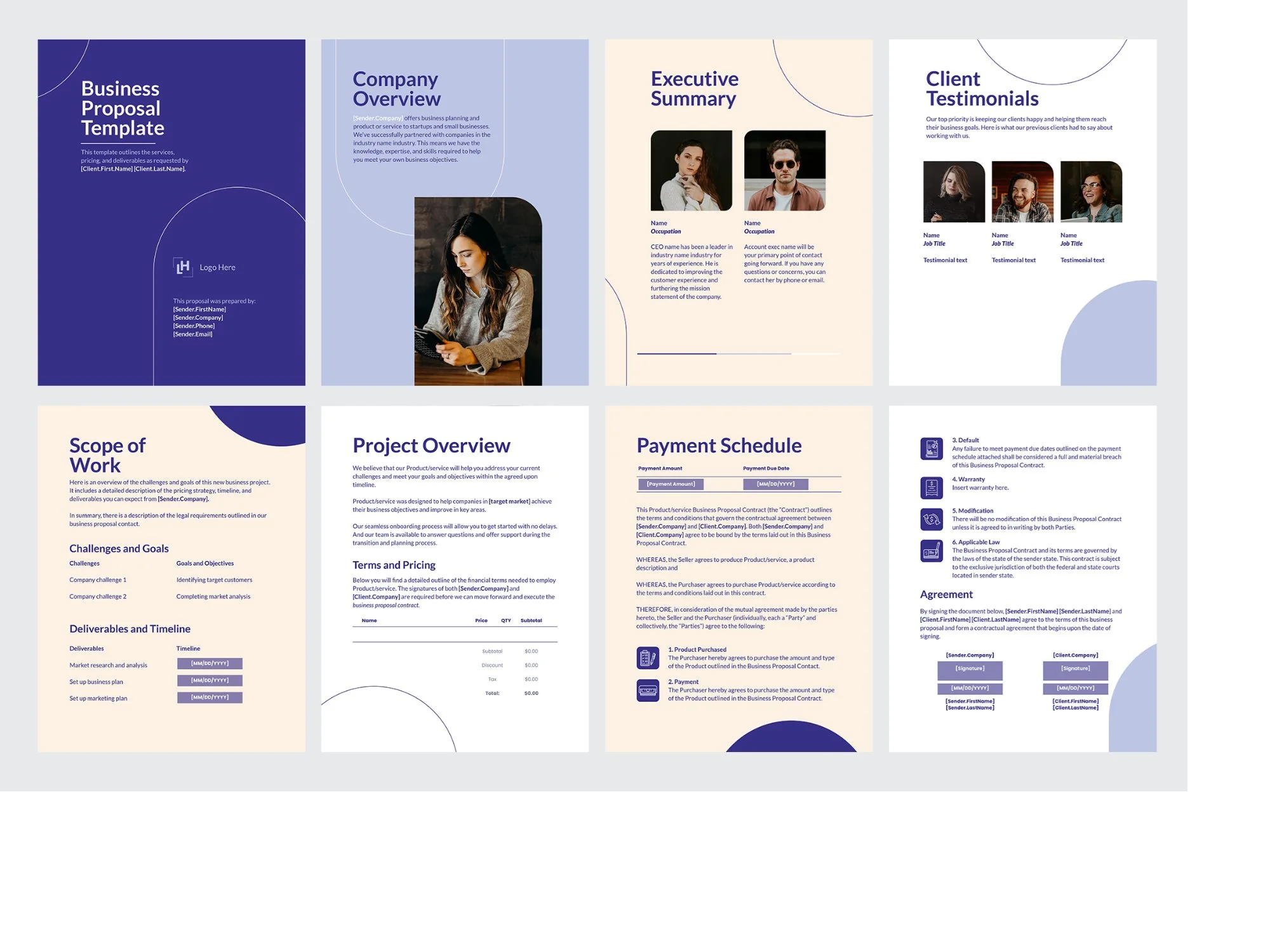
Step 6: Download or Share
-
- Download: Once you are satisfied with your Proposal, click the “Download” button in the upper right corner to download your Proposal as a PDF, PNG, or JPEG.
- Share Online: You can also share your Proposal directly from Canva by clicking the “Share” button and sending the link via email or social media platforms.
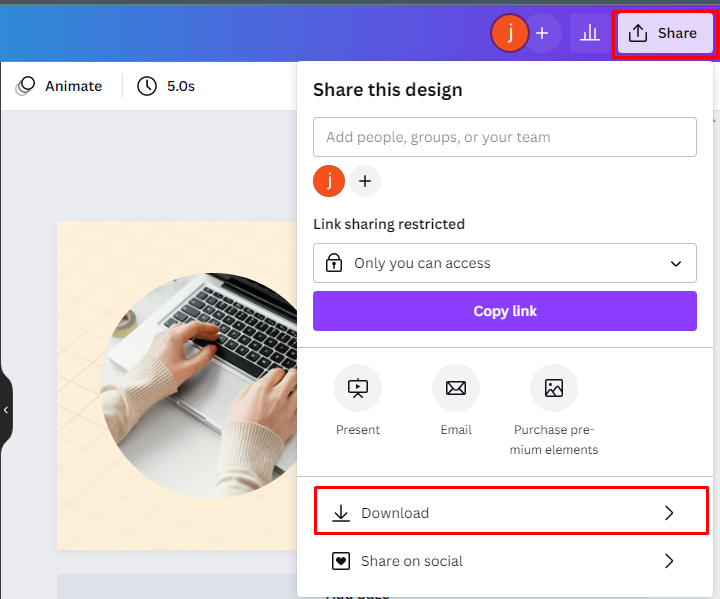
Thus, through the information shared in the above article, not only will it help you answer the question “ What is a Proposal ?” but it will also provide a lot of useful knowledge. Hopefully it will help you know how to write and create an impressive and successful Proposal.
Frequently Asked Questions
What is Research Proposal?
A Research Proposal is a document that proposes a research project, presenting the objectives, methods and rationale for the research in order to receive approval or funding from research organizations or agencies.
What is Request For Proposal?
A Request for Proposal (RFP) is a formal document issued by an organization to request suppliers to submit proposals for solutions, services, or products in order to select the most suitable contractor for a particular project.
How Much Time Does It Take to Prepare a Proposal?
Proposal preparation time depends on the complexity of the project and the requirements of the target audience, but typically takes from several days to several weeks.
In What Areas Can Proposals Be Used?
Proposals can be used in many areas, including business, research, funding, and product or service development projects.
What Are Common Mistakes When Writing a Proposal?
Common mistakes include lack of clarity, not focusing on customer needs, lack of detail on costs and benefits, and no clear structure.
How to Make Your Proposal Stand Out?
To make your Proposal stand out, make sure it’s clearly presented, focuses on customer benefits, uses a professional format, and offers creative, logical solutions.
How to Track Responses to Proposals?
Track feedback by contacting the Proposal recipient directly to receive feedback, answer questions, and update information as needed.
Comment Policy: We truly value your comments and appreciate the time you take to share your thoughts and feedback with us.
Note: Comments that are identified as spam or purely promotional will be removed.
To enhance your commenting experience, consider creating a Gravatar account. By adding an avatar and using the same e-mail here, your comments will feature a unique and recognizable avatar, making it easier for other members to identify you.
Please use a valid e-mail address so you can receive notifications when your comments receive replies.
